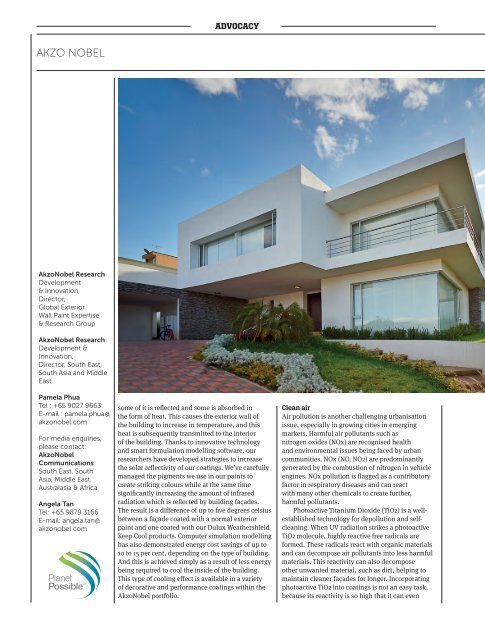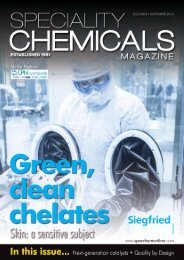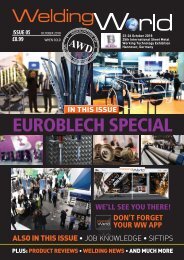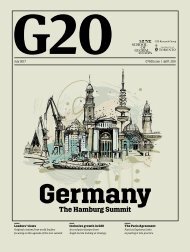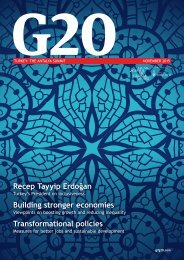G20 china_web
You also want an ePaper? Increase the reach of your titles
YUMPU automatically turns print PDFs into web optimized ePapers that Google loves.
ADVOCACY<br />
AKZO NOBEL<br />
AkzoNobel Research<br />
Development<br />
& Innovation,<br />
Director,<br />
Global Exterior<br />
Wall Paint Expertise<br />
& Research Group<br />
AkzoNobel Research<br />
Development &<br />
Innovation,<br />
Director, South East,<br />
South Asia and Middle<br />
East<br />
Pamela Phua<br />
Tel : +65 9027 9663<br />
E-mail : pamela.phua@<br />
akzonobel.com<br />
For media enquiries,<br />
please contact:<br />
AkzoNobel<br />
Communications<br />
South East, South<br />
Asia, Middle East,<br />
Australasia & Africa<br />
Angela Tan<br />
Tel: +65 9879 3166<br />
E-mail: angela.tan@<br />
akzonobel.com<br />
some of it is reflected and some is absorbed in<br />
the form of heat. This causes the exterior wall of<br />
the building to increase in temperature, and this<br />
heat is subsequently transmitted to the interior<br />
of the building. Thanks to innovative technology<br />
and smart formulation modelling software, our<br />
researchers have developed strategies to increase<br />
the solar reflectivity of our coatings. We’ve carefully<br />
managed the pigments we use in our paints to<br />
create striking colours while at the same time<br />
significantly increasing the amount of infrared<br />
radiation which is reflected by building façades.<br />
The result is a difference of up to five degrees celsius<br />
between a façade coated with a normal exterior<br />
paint and one coated with our Dulux Weathershield<br />
Keep Cool products. Computer simulation modelling<br />
has also demonstrated energy cost savings of up to<br />
10 to 15 per cent, depending on the type of building.<br />
And this is achieved simply as a result of less energy<br />
being required to cool the inside of the building.<br />
This type of cooling effect is available in a variety<br />
of decorative and performance coatings within the<br />
AkzoNobel portfolio.<br />
Clean air<br />
Air pollution is another challenging urbanisation<br />
issue, especially in growing cities in emerging<br />
markets. Harmful air pollutants such as<br />
nitrogen oxides (NOx) are recognised health<br />
and environmental issues being faced by urban<br />
communities. NOx (NO, NO2) are predominantly<br />
generated by the combustion of nitrogen in vehicle<br />
engines. NOx pollution is flagged as a contributory<br />
factor in respiratory diseases and can react<br />
with many other chemicals to create further,<br />
harmful pollutants.<br />
Photoactive Titanium Dioxide (TiO2) is a wellestablished<br />
technology for depollution and selfcleaning.<br />
When UV radiation strikes a photoactive<br />
TiO2 molecule, highly reactive free radicals are<br />
formed. These radicals react with organic materials<br />
and can decompose air pollutants into less harmful<br />
materials. This reactivity can also decompose<br />
other unwanted material, such as dirt, helping to<br />
maintain cleaner façades for longer. Incorporating<br />
photoactive TiO2 into coatings is not an easy task,<br />
because its reactivity is so high that it can even


